From Shiro Kuma by kumablog
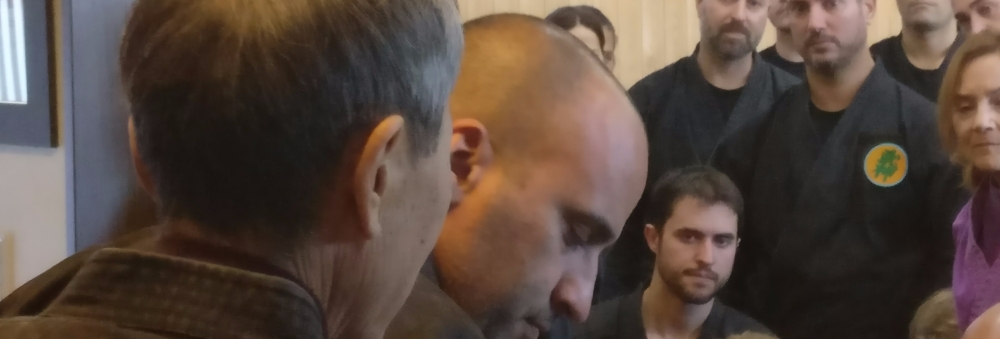 A class with Senō sensei is always a pleasure. First he is a gentleman; second, you get out of it more confused than when you entered. His last two classes were no exception!
A class with Senō sensei is always a pleasure. First he is a gentleman; second, you get out of it more confused than when you entered. His last two classes were no exception!
If we began with the Kunai, the beauty of his taijutsu was not about the weapon. The Kunai was an excuse to show his perfect sense of distance and control. Hatsumi Sensei speaks about controlling at every class, Senō sensei showed it. From his classes, I got a few interesting points that I want to share with you. They are four and should be done together.
1- Absorb with the legs, don’t put any strength in your arms and hands.
When you are in contact with Uke, don’t let your upper body do the technique. Instead, use your knees and legs to get the balance. Too often, when we are close to the opponent, we tend to use the upper body. Taijutsu is about using the body, and this is why we call it TAI-jutsu or “techniques with the body.”
2- The Kunai makes contact and defines a Shiten. (1)
With a Kunai, a Tantō, or your fingers, the point of contact with the opponent becomes your new vertical axis. From this fulcrum, you turn around it and get Uke’s balance. I asked Senō sensei to show it to me several times and each time I was feeling nothing. That was a weird sensation. It was like fighting the wind. When he is in contact with you, his legs turn around the Shiten, and you lose your balance by the lack of power applied to it. You do this Mawari movement (2) only with the legs. Uke sees the contact on the upper body. But as he cannot feel anything, his balance disappears when he walks around.
3- Get rid of any support.
The moment Uke leans onto you, and you feel his weigh is when you drop your support. That is “Jokyo”, or “to get rid of the support”. It was a fantastic sensation. There is no Chikara at all. (4)
Because of the lack of presence of Tori, Uke is alone, suspended in the air. He falls as a result. This concept of Jokyo is the evolution of Fuyū (5) used by Senō sensei until now. Jokyo comes after Fuyū. It is its evolution. After you become able to put Uke in suspension, you let him fall by removing any support he is using. Let gravity play its role.
4- Listen to Uke’s tension with your body.
Do not analyse. Feel the tensions in Uke’s body. And react by adjusting your body position with your legs.
When you can do these four things together:
- absorb with your legs,
- create a Shiten,
- apply Jokyo,
- listen with your whole body,
you are always protected.
During the last class, I was training with my friend Juan Manuel Guttierez from Argentina. We were unable to unify those four aspects of Senō sensei’s taijutsu. We did our best to get the four concepts together, but there was always one or two missing. It felt like trying to keep water in your hands. It feels impossible to do it.
Because of training like this one, you see the importance of studying in Japan several times a year. How are the others teachers able to teach without coming here? I don’t know.
When you know the Waza from the schools, and the weapons, then the real study can begin. And this is only about feeling. And this is the level of Mutō Dori that they teach these days here in Japan.
____________________
1- Shiten: 支点, fulcrum; support
2- Mawari: 周り, circumference, turning around a point (different from pivoting which is mawashi)
3- Jokyo: 除去, removal; getting rid of
4- Chikara: 力, force; strength; might; vigour (vigor); energy
5- Fuyū: 浮遊, floating; wandering; suspension


…

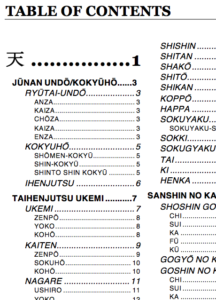
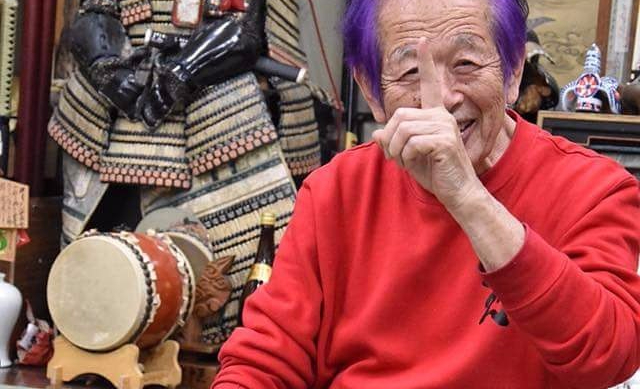
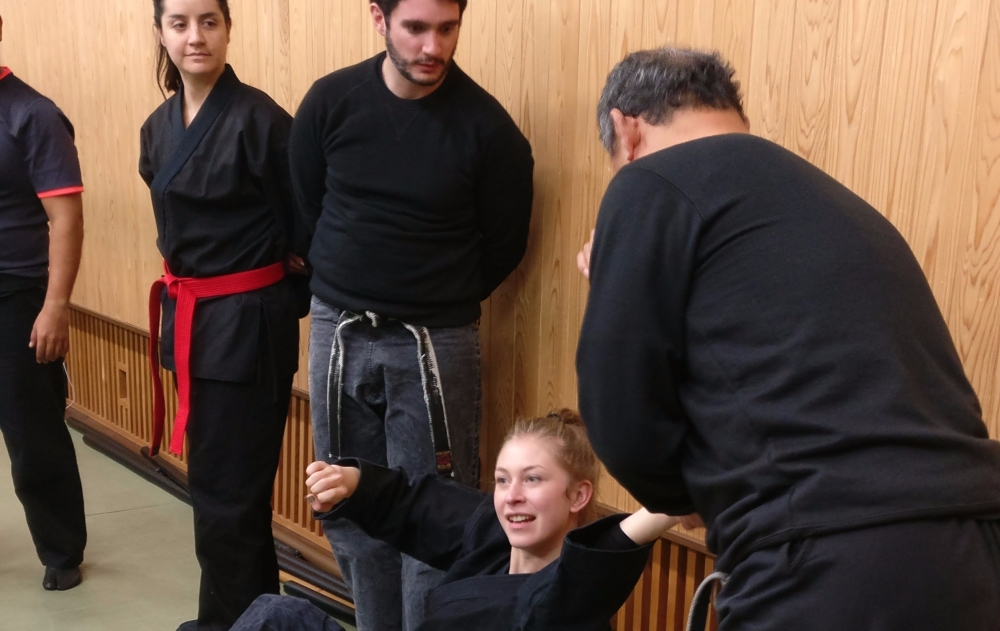 Nagato sensei’s main idea was to remain protected at all time. This is Tōtoku. (1)
Nagato sensei’s main idea was to remain protected at all time. This is Tōtoku. (1) At the end of the class, Nagato sensei answered many questions about training. He shared with us many insights on how training was at the start of the Bujinkan. He said that those discussions were common practice after Sensei’s class.
At the end of the class, Nagato sensei answered many questions about training. He shared with us many insights on how training was at the start of the Bujinkan. He said that those discussions were common practice after Sensei’s class. 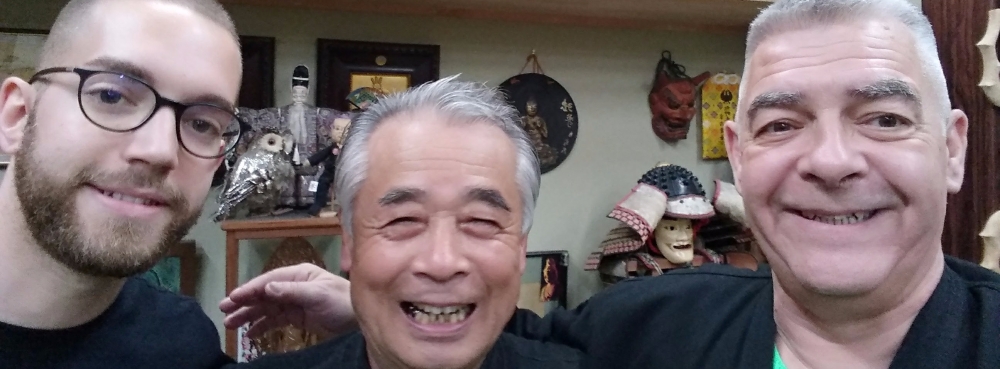 Noguchi has developed his taijutsu like every Japanese Dai Shihan. He has been my “teacher” since 1993. He is impressive and can turn any known Waza into something so different from the original technique.
Noguchi has developed his taijutsu like every Japanese Dai Shihan. He has been my “teacher” since 1993. He is impressive and can turn any known Waza into something so different from the original technique.


 A class with Senō sensei is always a pleasure. First he is a gentleman; second, you get out of it more confused than when you entered. His last two classes were no exception!
A class with Senō sensei is always a pleasure. First he is a gentleman; second, you get out of it more confused than when you entered. His last two classes were no exception!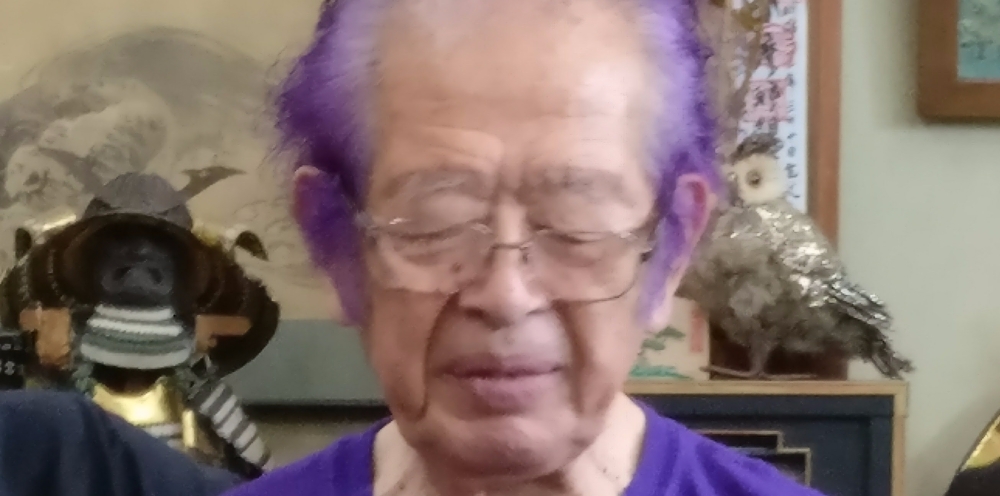 It’s been a long time since I got angry. Today I am.
It’s been a long time since I got angry. Today I am.